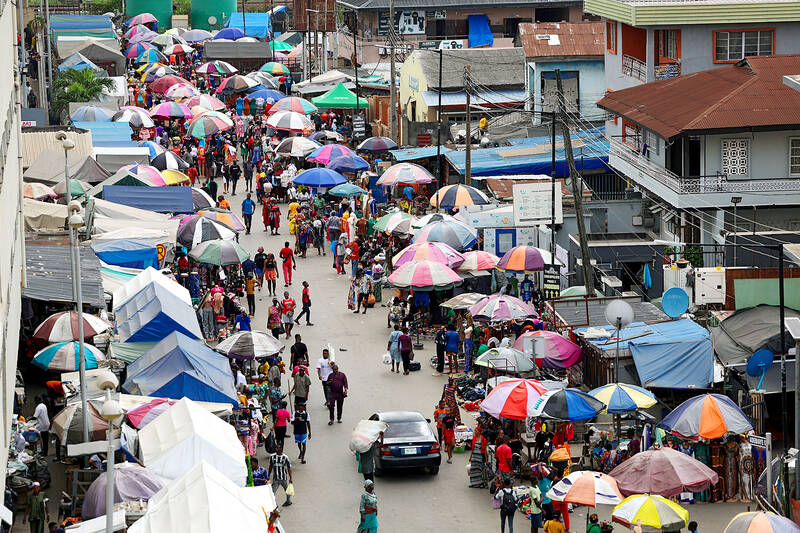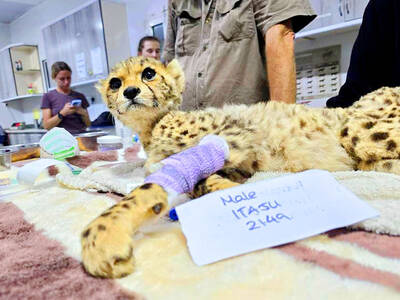A Nigerian university has ignited an online row after a video showed female staff members touching the breasts of women to check if they were wearing bras before taking part in an exam.
Hundreds of thousands of people have viewed the video of staff at Olabisi Onabanjo University (OOU) in the southwestern Ogun state enforcing the policy that female students must wear bras during exams.
In the online backlash sparked this month, some denounced the practice as archaic and sexist, while others likened it to sexual assault.

Photo: Reuters
“This is harassment. People have different reasons for not wearing bras,” a user identified as @kaysheila wrote on X.
“That’s human rights violation. Sue them!!!” added another user, @kastrotwits.
Others have defended the checks, saying it is “inappropriate” for women to go into a public space without wearing a bra.
Muizz Olatunji, president of the university’s students’ union, justified the practice in a post on X.
“’No bra. No entry’ is not a new policy in Olabisi Onabanjo University,” he wrote.
“OOU promotes a dress code policy aimed at maintaining a respectful and distraction-free environment, encouraging students to dress modestly and in line with the institution’s values,” he said.
The university had also urged female students to “shun indecent dressing that’s capable of making opposite sex unnecessarily lust after them,” he added.
His students’ union would nonetheless open talks with university officials to “explore alternative approaches to addressing indecent dressing, focusing on respectful and dignified interactions between students and staff.”
For now the university has not made any official comment on the uproar.
Most of Nigeria’s universities impose a dress code on students of varying degrees of severity. For example, miniskirts are often banned for women, as are dreadlocks or earrings for men.

END OF AN ERA: The vote brings the curtain down on 20 years of socialist rule, which began in 2005 when Evo Morales, an indigenous coca farmer, was elected president A center-right senator and a right-wing former president are to advance to a run-off for Bolivia’s presidency after the first round of elections on Sunday, marking the end of two decades of leftist rule, preliminary official results showed. Bolivian Senator Rodrigo Paz was the surprise front-runner, with 32.15 percent of the vote cast in an election dominated by a deep economic crisis, results published by the electoral commission showed. He was followed by former Bolivian president Jorge “Tuto” Quiroga in second with 26.87 percent, according to results based on 92 percent of votes cast. Millionaire businessman Samuel Doria Medina, who had been tipped

ELECTION DISTRACTION? When attention shifted away from the fight against the militants to politics, losses and setbacks in the battlefield increased, an analyst said Recent clashes in Somalia’s semi-autonomous Jubaland region are alarming experts, exposing cracks in the country’s federal system and creating an opening for militant group al-Shabaab to gain ground. Following years of conflict, Somalia is a loose federation of five semi-autonomous member states — Puntland, Jubaland, Galmudug, Hirshabelle and South West — that maintain often fractious relations with the central government in the capital, Mogadishu. However, ahead of elections next year, Somalia has sought to assert control over its member states, which security analysts said has created gaps for al-Shabaab infiltration. Last week, two Somalian soldiers were killed in clashes between pro-government forces and

Ten cheetah cubs held in captivity since birth and destined for international wildlife trade markets have been rescued in Somaliland, a breakaway region of Somalia. They were all in stable condition despite all of them having been undernourished and limping due to being tied in captivity for months, said Laurie Marker, founder of the Cheetah Conservation Fund, which is caring for the cubs. One eight-month-old cub was unable to walk after been tied up for six months, while a five-month-old was “very malnourished [a bag of bones], with sores all over her body and full of botfly maggots which are under the

BRUSHED OFF: An ambassador to Australia previously said that Beijing does not see a reason to apologize for its naval exercises and military maneuvers in international areas China set off alarm bells in New Zealand when it dispatched powerful warships on unprecedented missions in the South Pacific without explanation, military documents showed. Beijing has spent years expanding its reach in the southern Pacific Ocean, courting island nations with new hospitals, freshly paved roads and generous offers of climate aid. However, these diplomatic efforts have increasingly been accompanied by more overt displays of military power. Three Chinese warships sailed the Tasman Sea between Australia and New Zealand in February, the first time such a task group had been sighted in those waters. “We have never seen vessels with this capability